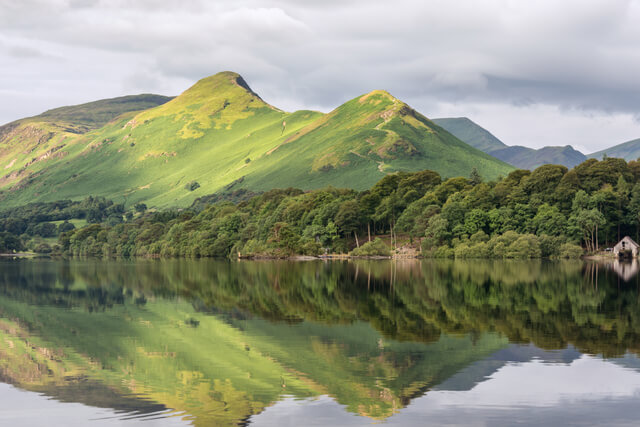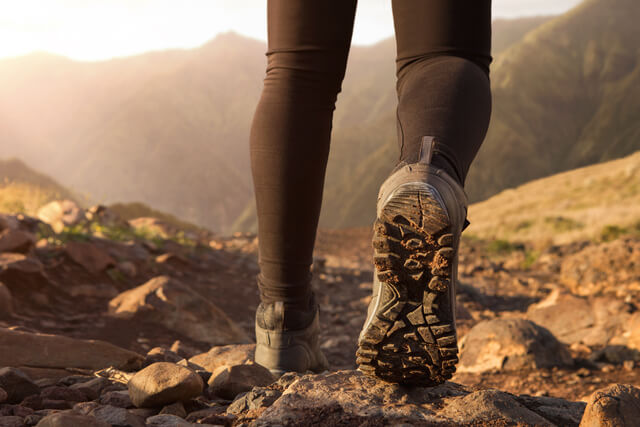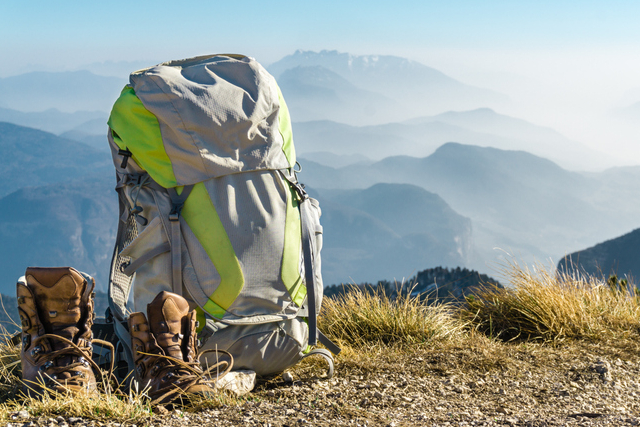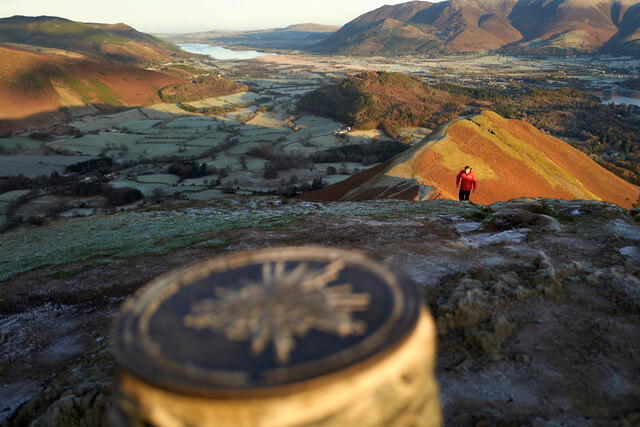A haven for outdoor adventures, following the Catbells walk is a wonderful way to explore the rural delights of the Lake District National Park.
Towering 451 metres above the shores of Derwentwater, this Lake District fell is among the areas most popular. With panoramic lake and countryside views from the summit, it’s easy to see why.
Continue reading to discover more about the Catbells walk…
Where is Catbells?

Overlooking the glistening waters of Derwentwater lake, Catbells fell sits in the north-western part of the Lake District National Park.
Due to its rural location, Catbells is enveloped by miles of rolling greenery, providing the perfect backdrop for those looking for a peaceful retreat.
The bustling tourist town of Keswick is set a short distance away, offering visitors to this part of the Lakes the best of both worlds. Return from an afternoon of outdoor pursuits and refuel at one of Keswick’s delicious restaurants.
Renowned British walker, Alfred Wainwright, once commented that the Catbells walk was one of his great favourites. He continued “a family fell where grandmothers and infants can climb the heights together, a place beloved.”
How high is Catbells?

Sitting at 1,481ft, Catbells is considered one of the smaller fells in the area. To put it into perspective, Scafell Pike is over twice the size of Catbells, at a staggering 3209ft.
Despite the height of Catbells, the National Trust rangers have affectionately described the fell as a “proper little mountain”. With its steep inclines, rocky scrambles, and false summits, this Lake District fell lives up to its nickname.
How long does it take to walk Catbells?

Depending on the route ventured, it typically takes between 2-4 hours to walk Catbells. Most trails leading to the summit are suitable for both seasoned hikers and beginners.
The most popular Catbells walking route begins at Hawes End Landing Stage, and rewards climbers with panoramic views across Keswick, Derwentwater and Borrowdale.
The path requires a moderate effort to complete, with several steep climbs and minor scrambles along the way. The route stretches 3.5 miles, with an abundance of photo opportunities available.
On the journey to the summit, stop and enjoy the fantastic panorama of Skiddaw dominating the skyline. Look out towards the right to see Causey Pike and its unusual knobbly peak across the Newlands Valley.
Easily accessible, reach this Catbells walking route by catching the Keswick Launch from Keswick to Hawes End. Doing so will allow you the opportunity to appreciate the fell scenery from a different perspective.
Does Catbells have a car park?
Unfortunately, there is no official Catbells car park. There are several roadside laybys nearby, however these do tend to fill up quickly. You’ll find this Catbells car parking in Gurtherscale and Little Town.
As roadside parking may be scarce, we recommend travelling to Catbells via ferry aboard the Keswick Launch. You’ll find several Pay & Display car parks in Keswick.
Are there facilities along the Catbells walking route?
Currently there are no facilities available at Catbells. All of your essential amenities can be found in the nearby town of Keswick, including public toilets at Keswick Town Hall.
The Village Shop in Braithwaite is the closest convenience store, about 5 miles away. Here you can stock up on homemade cakes, tasty pastries, and sandwiches, and of course, Kendal mint cake!
The nearby pub, the Swinside Inn, makes the perfect spot to enjoy a post-walk pint or warm bite to eat. Here you can marvel at the heights climbed from the comfort of the sunny beer garden.
What should I take on my Catbells walk?

Fail to prepare, prepare to fail! As with any walk, it’s important you plan and prepare ahead of time. We recommend packing essentials including a map, compass, torch and whistle.
Wear suitable footwear and weather-appropriate clothing. The weather in the Lake District is incredibly changeable, even in summer. Waterproofs and suntan lotion are a must, whatever time of year!
Be sure to pack plenty of food and water to help keep fuelled and hydrated, and take a first aid kit in your bag, just in case. Due to the rural location, don’t rely on your mobile phone, as many areas have little or no signal.
More useful guidance can be found at Keswick Mountain Rescue.
Why is Catbells called Catbells?
It is widely rumoured that the name Catbells comes from a corruption of the term ‘cats bield’. Bield, which means home or shelter in its archaic form, refers to the wildcats that used to roam freely through the Lakeland landscape.
Fear not, as one of the UK’s most endangered mammals, you won’t have to worry about coming across any of these four-legged felines.
There is some debate over the spelling of this iconic Lake District fell. Whether it’s spelt ‘Catbells’ or ‘Cat Bells’ has been a discussion for years. However you choose to spell it, the meaning behind the name remains the same.
A helpful tip from Lake District Lodge Holidays

Many walkers follow the trail to the summit and head back down the same way. To keep things exciting, we recommend following the circular trail.
Walk anti-clockwise, as most walkers do, and follow the signs from Hawes End for ‘Catbells Summit’. The ascent is steep, however, it’s much easier to navigate on the way up than on the way back down.
At the summit, follow the footpath past the trig and begin the ascent across the ridge back towards your starting position.
Please note that the Catbells walk is an extremely popular route throughout the year. Expect to share the summit with a few other like-minded adventurers. steeper, rockier sections. This is a busy and popular walk throughout the year so expect to share the summit with a few others.
Fix the Fells
Due to the popularity of many Catbells walking routes, the fell suffers quite badly from erosion. Signs have been erected asking walkers to keep to the official paths, but sadly this doesn’t always happen.
The Fix the Fells initiative has been established to help repair and maintain the Lakeland fells from further erosion. Donations are appreciated to help keep these fells accessible and enjoyable by all.
Tempted to lace up your walking boots and follow a Catbells walk? Take a look at our collection of Keswick lodges and secure your base to rest your head!
For more inspiration on how to explore the natural beauty of the Lake District, give our guides on 6 gorgeous bluebell walks and 11 of the best Lake District walks a read. And there’s plenty more to explore at one of these Lake District National Trust properties!